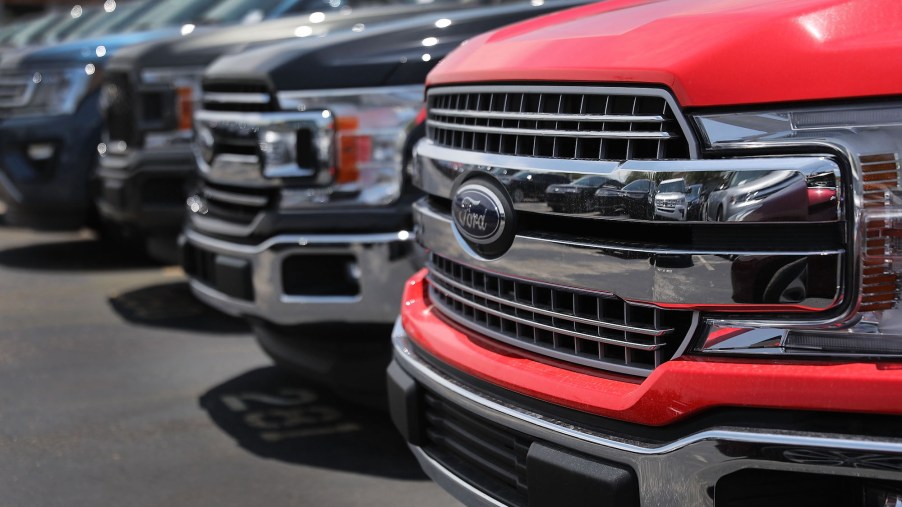
Only the Ford F-Series Can Boast This Distinction Among Pickup Trucks
America’s love of pickup trucks arguably began with the Ford F-Series. With its origins dating back over a century, the beloved truck series has provided power, dependability, and perpetual innovation. From the Model TT, which debuted in 1917, to today’s potent, versatile haulers, the Ford F-Series has enjoyed a long and successful life. It also boasts a distinction that no other truck line can.
How the Ford F-Series got its start
When Ford moved away from producing car-based utility vehicles late in the 1940s, the automaker was about to create a legend. Originally known as the Ford Bonus-Built, the series offered F-1 (half-ton), F-2 (3/4 ton), and F-3 (one-ton) models and redefined the truck class, Car Advice explains.
Up to that point, companies like Mack made big trucks. Smaller utility vehicles, what became the modern pickup truck, were basically smaller, car-based versions of those.
The Bonus-Built was the first pickup truck with a bed and chassis designed for light truck use, and it changed everything. Since then, other brands scrambled to create their own versions, to add improvements and innovations. To this day, now in its 14th generation, the Ford F-Series still dominates. In fact, the F-150 has held the title of best-selling truck for over four decades.
The Ford F-Series is the longest-running pickup truck nameplate
The Ford F-Series is also the longest-running pickup truck nameplate still in production in the United States.
By the series’ second generation, Ford changed its naming convention from F-1, F-2, and F-3 to the more familiar model names we know today. The F-1 became the F-100 and F-110, the F-2 and F-3 became the F-250 and F-260, and F-4 became the F-350 and F-360. They used the numbers to scale the payload.
How did they go from 1 to 100? It’s believed that in honor of the F-100 Super Sabre fighter jet that completed its maiden flight in May 1953, Ford changed the F-1 to the F-100. The rest of the series also changed to match, and the extra “10” denoted versions equipped with all-wheel drive.
The Ford F-250 and F-350 have been around since the early 1950s. However, we didn’t get the F-150 until 1975, when it debuted as part of the sixth generation.
Fun facts about this truck line
In the F-Series’ third generation, the trucks adopted the smooth side styling still found on pickups today, MotorTrend reports. However, consumers could still get a model that was more like a narrow box with what was called “Flareside” external fenders as an option. Ford also offered two bed lengths: 6.5 feet and 8.0 feet.
In 1959, Ford modified the front bumper. The change allowed shoppers to get it chromed or painted, and it was a feature for the next 20 years. In fact, it remains the longest-running unaltered part on an F-Series truck.
Then, in 1965, Ford replaced the leaf-spring solid front axle with a pair of forged swing arms on coil springs. Engineers decided the change would make the trucks far more durable. In 1980, a Twin Traction-Beam 4WD variant debuted with the seventh generation.
1965 also saw the Ranger come out. It was the top-of-the-line trim on F-100 trucks, making it more like the King Ranch of that time. That year also saw the beginning of crew-cab production for the F-250 and F-350. It wasn’t the first time Ford offered such a cab, but before, the Blue Oval contracted out its production to coachbuilders.


